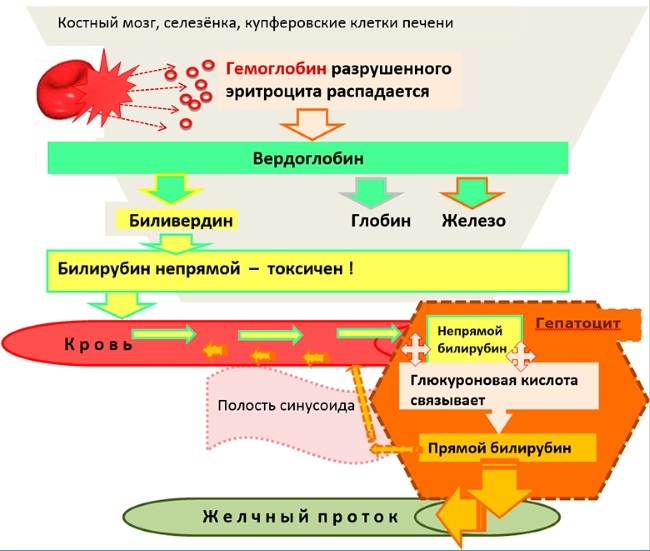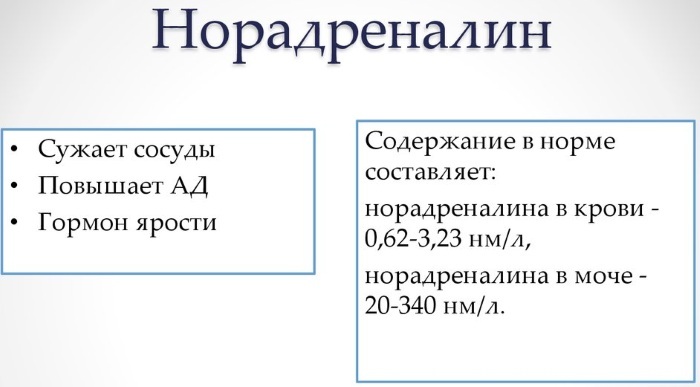Biochemical studies of venous blood together with hepatic parameters - one of the main analyzes used in the diagnosis during the initial treatment of the patient.
Although the analyzes are nonspecific and normal indicators fluctuate widely, the doctor, comparing all the results, knowing the clinic and course diseases, having data from other studies, may suspect this or that pathology and develop a plan for its final identification.
Record content:
-
1 Concept and meaning
- 1.1 Physiological significance
- 2 Indicator table is normal
- 3 Symptoms of the rise and fall
- 4 Reasons for promotion and demotion
- 5 Indications for research
- 6 How is it determined
- 7 Preparation and analysis
-
8 Explanation of research results
- 8.1 Signs of death of hepatocytes
- 8.2 Signs of liver dysfunction
- 8.3 Disorders associated with stagnation of bile in the biliary tract
- 9 When to see a doctor
- 10 How to bounce back
- 11 Possible complications
- 12 Liver performance video
Concept and meaning
Hepatic indicators of a biochemical blood test - a set of laboratory data, which can be used to judge the function of the liver and biliary system.
In order to know how the patient's liver copes with its many functions, it is enough to determine the content in his blood:
- Enzymes:
- transaminases - enzymes, participate in the reactions of interconversion of lipids, carbohydrates and proteins, thereby realizing the connection between the main types of metabolism in the body (AST, ALT, GGT);
- hydrolases - enzymes that break down complex substances into simpler ones with the participation of water (ALP).
- Proteins:
- globulins;
- albumin,
- their amount.
- Bilirubin - pigment formed during the breakdown of substances containing heme (hemoglobin, myoglobin, cytochrome):
- toxic fraction;
- non-toxic fraction.
Often, together with hepatic parameters, the prothrombin index (PI), which characterizes the blood coagulation system, is determined.
Previously, the hepatic complex included thymol and sublimate tests, but now, due to their low specificity, they are rarely performed.
Physiological significance
- Transaminases (AST, ALT, GGT) - enzymes inside cells. A sharp increase in their concentration in the blood is possible only with tissue death. It is not only the indices of each enzyme separately that matter, but also their AST / ALT ratio (Ritis coefficient). The norm of this coefficient is 1-1.75 (regardless of gender and age).
- Alkaline phosphatase - an enzyme included in the subgroup of hydrolases. Its main function is the elimination of phosphorus from organic compounds. The enzyme is involved in the transfer of phosphorus across the cell membrane, therefore it is often present in the blood.
- Proteins. Albumin is the main transport protein; it is synthesized only in the liver; other protein molecules are also synthesized here. When the liver tissue dies, the amount of protein in the blood can change.
-
Bilirubin, formed from heme during the death of erythrocytes - indirect bilirubin, toxic to the body, in the liver it is rendered harmless, turning into direct bilirubin, and enters bile. As part of bile, bilirubin participates in the emulsification of edible fats, and then is excreted through the intestines.
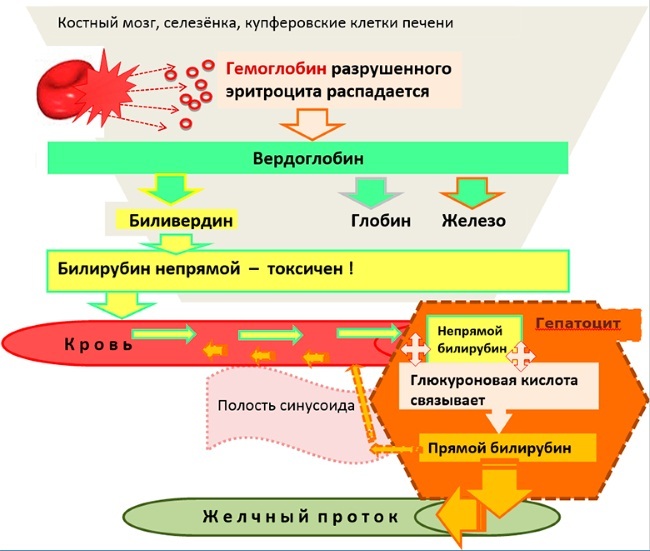
- Prothrombin - a protein that is a precursor of thrombin. PI reflects not only the state of the blood coagulation system, but also the protein-forming function of the liver.
Indicator table is normal
| Biochemical substance | Therapy | Pediatrics | |
| M | F | ||
| AST (units / l) | 0-40 | 0-35 | 1.5 months - up to 70 12 months - up to 60 15 years old - 6-40 |
| ALT (units / l) | 0- 40 | 0-31 | First week - 59 12 months - 54 3 years - 35 6 years - 29 from 12 years old - 39 |
| GGT (units / l) | up to 45 | up to 32 | 1.5 months to -200 1 year - up to -60 15 years - under-25 |
| ALP (units / l) | 120-130 | 100-105 | 1.5 months - up to 350 12 months - up to 450 15 years - up to 360 |
| Total bilirubin (μmol / L) | 3,2-17,0 | 3,4-17,0 | newborns - 23.9-34.0 the first 5 days - 90.14-205.0 14 days - 52.2- 69.1 30 days - 9.2-14.5 older than 1 month - as in adults |
| Direct bilirubin (μmol / L) | 0,7-7,9 | 0,9-4,3 | newborns - 8.72-14.4 the first 5 days - 7.84 30 days - 2.57 older than 1 month - as in adults |
| Indirect bilirubin (μmol / L) | 6,4-16,8 | up to 16.2 | newborns - 8.72-14.37 the first 5 days - 82.24 30 days - 8.55 Older than a month - like adults |
| Total protein (g / L) | 60,0-80,0 | 60,0-80,0 | in newborns - 42.0-62.0 12 months - 56-72 from 4 years 60-80.0 |
| Albumin (percentage) | 40-60 | 40-60 | Newborns - 32-40 12 months - 34- 43 from 11 years old - 40.0-50.0 |
Symptoms of the rise and fall
The clinic accompanying changes in blood biochemistry depends on the nosology that caused these changes.
When pathology occurs, the symptoms are scanty and nonspecific:
- weakness, reduced ability to work;
- unmotivated weight loss;
- instability of the stool and discoloration of the stool;
- bitterness in the mouth;
- headaches;
- insomnia.
It can be difficult to make a diagnosis at the first manifestation of the disease, based only on the clinic. As the pathology progresses, distinct symptoms of damage to the hepatobiliary system appear.
- Pain syndrome:
- Sharp pain in the right side - symptomatic for lesions of the gallbladder (gallstone disease, purulent cholecystitis);

- discomfort in the upper abdomen that occurs after drinking alcohol is a characteristic sign of chronic liver pathology, arises as a result of an increase in the organ and stretching of its capsule;
- absence of pain syndrome - typical for most hepatic pathologies, pain appears only in the later stages of the disease, when the hepatic capsule is involved in the process.
- Skin. Depending on the disease that caused the liver pathology, the color of the skin can be grayish, pale, icteric. The skin epithelium becomes thinner. Often, acne, petechial rash, areas of dystrophic altered tissue are determined on the skin. Deposition of direct bilirubin in the skin is accompanied by severe itching.
- Hormonal shifts. Hormones are protein molecules synthesized in the endocrine glands, but their deactivation occurs in liver, with functional disorders of which, hormones accumulate in the blood, disrupting the work of the endocrine systems.
- Central nervous system. With disorders of the detoxification function of the liver, the neutralization of ammonia and metabolic products, which have a detrimental effect on the central nervous system, is impaired. The result is hepatic encephalopathy, accompanied by severe neurological symptoms and often ending in coma.
Reasons for promotion and demotion
Hepatic indicators of a biochemical blood test can change both as a result of liver diseases and in various extrahepatic pathologies.
An increase in hepatic parameters is possible in the case of:
- long-term use of analgesics, statins, sulfonamides and other hepatotoxic drugs;
- herbal medicine (ephedra, skullcap);
- excessive alcohol consumption;
- metabolic disorders;
- burns and injuries;
- dehydration
Significant changes in the biochemical analysis of venous blood, and indicators hepatic function, are noted in primary and secondary liver pathology:
- Diseases involving liver tissue damage (hepatitis, primary malignant neoplasia of the liver).
- Diseases occurring with impaired outflow of bile (cholecystitis, cholangitis).
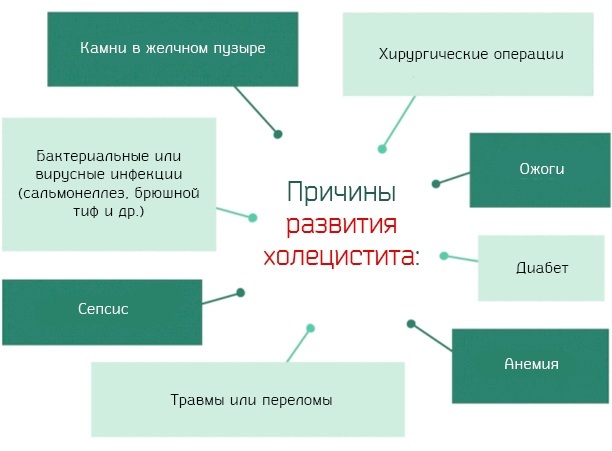
- Diseases occurring with impaired blood circulation in the liver (vascular thrombosis, liver infarction).
- Metastases with neoplasms of other organs (stomach, bronchi, lungs).
- Gestosis of pregnant women.
- Hereditary enzymopathies (hepatolenticular degeneration, hemochromatosis, steatosis).
Indications for research
Blood biochemistry is included in the list of diagnostic examinations prescribed by the therapist during the initial treatment of the patient.
Liver tests are added to the analysis if the patient is concerned about:
- discomfort in the right upper abdomen;
- bitter taste;
- instability of the stool;
- icterus of the skin;
- discoloration of urine and feces.
The analysis is carried out without fail:
- when a patient comes into contact with the blood of a patient with hepatitis (medical workers, rescue service);
- in the case of prolonged use of drugs with a hepatotoxic effect;
- with chronic alcoholism;
- if an increase in the size of the liver is found on examination;
- with obesity.
If hepatic pathology is detected, the therapist refers the patient to a gastroenterologist (hepatologist).
How is it determined
Hepatic indicators of a biochemical blood test - part of a detailed analysis of biochemical blood ingredients
The basis of the method is a step-by-step chemical analysis. The results of chemical reactions are investigated using special equipment. Only standardized chemicals and instruments are used.
Preparation and analysis
The reliability of the results of a biochemical blood test can be influenced by such factors as overeating, alcohol consumption, medications, and a stressful situation.
Therefore, conducting a study requires preparation:
- two days before taking the test, you should exclude fatty and fried foods, alcohol, stop, if possible, taking medications;
- the day before the analysis, refrain from drinking coffee, avoid stressful situations, limit physical activity;
- dinner, on the eve of the study, should not be heavy and late;
- on the day of the analysis, do not smoke before taking it;
- the analysis is given in the morning, on an empty stomach.
If the patient is taking medications, and it is impossible to stop taking them, then when the test is taken, the medications, their doses and how long the patient has been taking them are indicated on the form.
Blood sampling is carried out from the cubital vein in the standard way:
- the procedure is carried out in a treatment room, in compliance with all the rules of asepsis and antiseptics, with a disposable syringe;
- to avoid the occurrence of false indicators, the tourniquet is applied for a very short time (1-2 minutes);
- 5 ml of blood is taken for analysis;
- the collected blood is stored and transported in special darkened containers.
After taking blood, it is necessary to remain in a sitting position for some time to prevent dizziness.
Explanation of research results
The liver parameters obtained as a result of biochemical studies are nonspecific.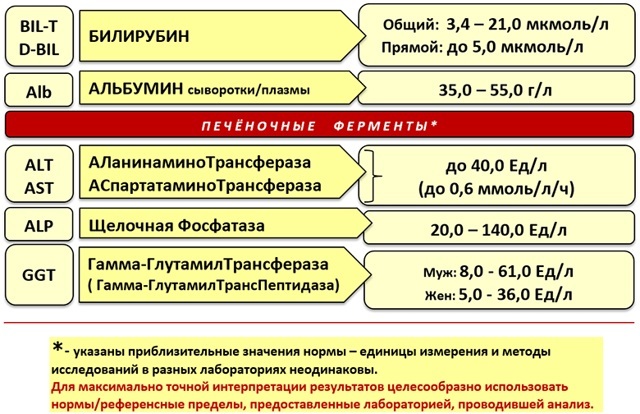
When decoding survey data, one should rely not only on the absolute numbers of changes in a particular indicator, but also correlate the change in one indicator with other changes, the clinical picture of the disease, laboratory and instrumental surveys. This is a difficult analytical work, which can only be carried out with high quality by a doctor.
However, there is an algorithm for decoding liver tests, which makes it possible to suspect some violations in the hepatobiliary system and seek help in time.
All pathological processes in the body associated with changes in hepatic parameters in the blood can be divided into three groups:
- changes associated with the death of hepatocytes;
- changes associated with a violation of the basic functions of the liver (protein synthesis, detoxification function, disinfection and excretion of bilirubin from the body);
- changes associated with stagnation of bile in the biliary system.
Signs of death of hepatocytes
Cell death leads to an increase in the concentration of liver enzymes in the blood, coming from damaged cells. Normally, they are present in the blood in minimal amounts.
The death of hepatocytes leads to the release into the blood of a large amount of already formed bound bilirubin. Unbound toxic bilirubin newly entering the liver cannot be neutralized by a reduced amount functioning cells, therefore, the unbound fraction rises, which means that the total bilirubin.
Signs of liver cell death are:
- An increase in the level of AST and ALT;

- Increase in indicators of total bilirubin and its fractions.
Despite the fact that the death of the liver tissue is observed, it usually does not manifest itself clinically. Only with high activity of the disease can there be icterus of the skin and sclera, changes in the color of urine and feces.
Signs of liver dysfunction
When the disease progresses and the liver ceases to perform its basic functions, many different symptoms appear, laboratory tests change dramatically:
-
Impaired binding and excretion of bilirubin - unbound and total bilirubin increases (a yellow color of the skin and sclera appears, darkening of the color of urine and feces).
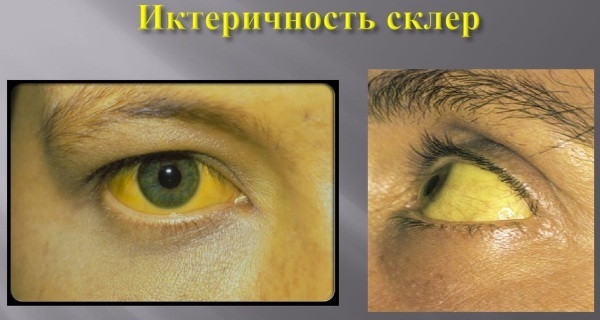
- Violation of protein synthesis - decrease in blood albumin and total protein (subcutaneous and intracavitary edema appears).
- Disruption of the synthesis of proteins involved in the process of blood clotting - a decrease in the level of PTI, fibrinogen (bleeding of the gums, mucous membranes of the gastrointestinal tract, internal organs).
Disorders associated with stagnation of bile in the biliary tract
The cause of intrahepatic stasis of bile can be diseases of the gallbladder and biliary ducts, but the most common cause is the proliferation of connective tissue that replaces the dead hepatocytes.
Rough connective tissue compresses intrahepatic structures, including the bile ducts. As a result of the impaired outflow of bile, the components of bile through the wall of the bile ducts enter the blood.
As a result:
- the level of GGT and alkaline phosphatase rises;
- the level of total blood cholesterol increases;
- the amount of bound and total bilirubin increases significantly.
When to see a doctor
If, during a routine examination or during examination for any pathology, changes are revealed in the biochemical analysis for liver function tests, you should immediately contact a therapist. At the same time, the absence of complaints does not play a significant role.
The therapist, after re-analysis and examination of the patient, will prescribe additional studies (analysis blood test for viral hepatitis B, C, D, blood test for autoimmune pathology, abdominal sonography cavity). If suspicions of liver pathology are confirmed, the patient is referred for an appointment with a gastroenterologist (hepatologist).
How to bounce back
Liver indicators of a biochemical blood test are only indicators of the functional state of the liver, therefore there is no single way to normalize these indicators. It is necessary to treat the disease that caused changes in liver function.
In hepatology, agents of various mechanisms of action are used. They are capable of:
- to normalize lipid metabolism in various ways;
- enhance the regeneration of hepatocytes;
- improve the outflow of bile;
- dissolve small cholesterol stones.
These drugs include:
- Essential phospholipids:
- Essentiale-forte 900 mg / day for 3 doses, a course of 3 months or more
- Essliver-forte 600 mg / day for 2 doses, a course of at least 3 months.
- Medicinal products of animal origin
- Hepatosan 400 mg / day for 2 doses, the course is selected individually;
- Herbal medicines:
- Hepabene 3 capsules / day for 3 doses, the drug is taken for a long time;
- LIV-52 3 tablets / day for 3 doses, the course is prescribed individually;
- Carsil 35 mg / day for 1 dose;
- Medicines with amino acids:
- Heptral 500-800 mg / day for 1 dose;
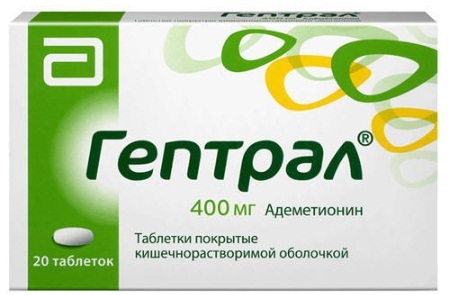
- Heptor 400-800 mg / day for 2 doses, the average course duration is 2-4 weeks.
- Synthetic hepatoprotectors:
- Antral 0.4 g / day, course 3-4 weeks;
- Ursosan 250-500 mg / day, the course of treatment is 6-8 months.
Possible complications
Almost all liver diseases are initially asymptomatic. At this stage, the disease can be suspected only with the help of laboratory methods, one of which is a biochemical blood test for liver function tests.
If at this stage the changes in liver parameters are ignored, the disease will progress, and by the time the first complaints appear, the process may be irreversible.
The most serious consequences include:
- cirrhosis of the liver;
- liver neoplasia;
- massive, life-threatening bleeding;
- ascites, peritonitis;
- encephalopathy;
- coma.
Therefore, any changes in the indicators of the functional activity of the liver, detected in the blood by the biochemical method, require close attention and analysis.
Liver performance video
The norm of ALT and AST in the blood test:


